Steel chambers filled with liquid nitrogen at a facility for cryogenically preserving human bodies in the United States currently hold over 170 individuals, with the hope that one day they can be revived.
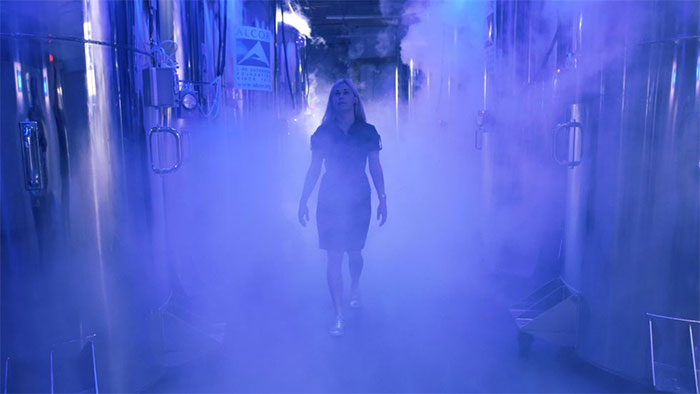
Human bodies preserved inside sealed steel chambers.
According to Cnet, the cryogenic center in Scottsdale, Arizona, operated by the Alcor Life Extension Foundation, is currently the largest facility for preserving human bodies through cryonics in the world.
Alcor offers a service that allows for the preservation of human remains in optimal condition, with the hope that scientific advancements will enable the revival of these individuals in the future.
Founded in 1972 by Linda and Fred Chamberlain, the couple met at a cryonics engineering conference in the early 1970s. At that time, Linda was still in college, and Fred was working for NASA.
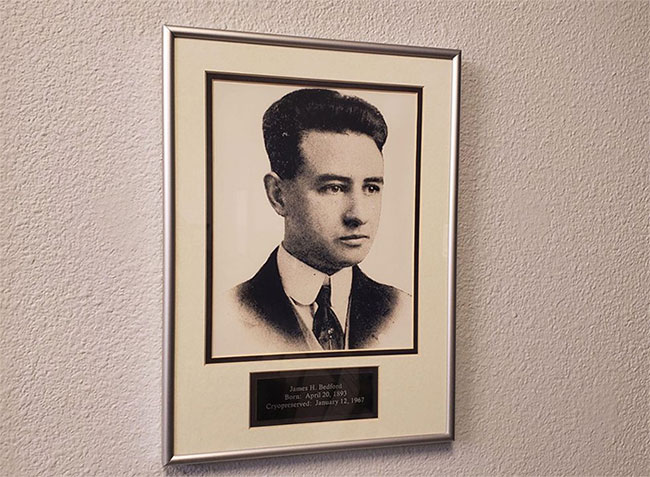
Portraits of individuals who have been cryogenically preserved displayed at Alcor’s facility.
Together, they established an organization that could potentially offer people a second chance at life.
“Our goal was to create an organization that could save lives and give people the opportunity to restore health and function,” Linda Chamberlain stated. “If we had known how difficult it would be, we might not have started. But once we began, we were committed to seeing it through.”
According to Alcor, James Bedford—one of the wealthiest individuals in the United States during the 1960s—was the first person to undergo cryonic preservation.
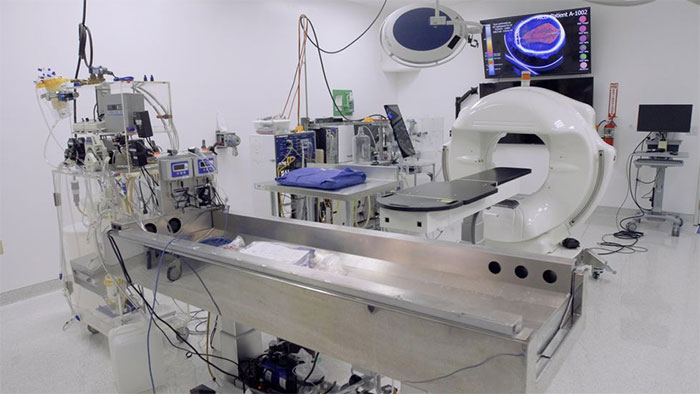
Surgical room where doctors will withdraw blood and replace it with antifreeze.
Bedford was cryonically preserved immediately after his heart stopped beating in 1967, five years before Alcor was founded. After being frozen, Bedford was not considered dead, but neither was he considered alive.
He was transferred to Alcor’s facility for preservation in 1991.
Inside the center, one can see portraits of individuals who have chosen cryonic preservation. These individuals are listed with their names, birth dates, and the dates they were frozen, without any date of death.
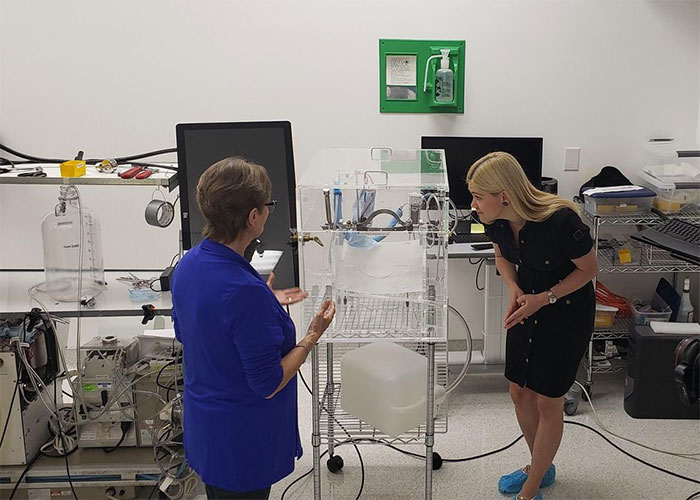
Experts at Alcor must ensure that before freezing, the cells and organs of the body are still functioning.
According to Linda Chamberlain, Alcor is continually researching and improving, developing the best methods for clients who choose cryonic preservation.
Alcor states that the best way to preserve a human body is through a process called vitrification. This process involves removing blood and bodily fluids from the cells and replacing them with a type of antifreeze used in medicine.
By doing this, when the body temperature drops to sub-zero levels, the body enters a glass-like state rather than freezing solid.
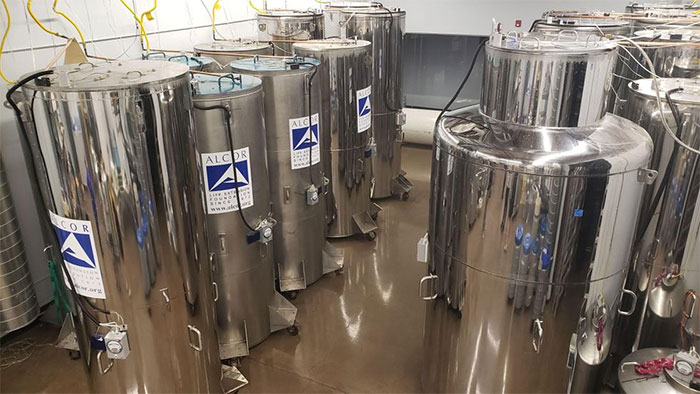
Chambers filled with liquid nitrogen preserving human bodies.
In this state, Alcor claims that the human body can be preserved perfectly for decades. Individuals brought to Alcor for cryonic preservation are those who have registered in advance, diagnosed as clinically dead, intubated, and with blood still circulating throughout the body.
“Death occurs when your heart stops beating, and your lungs stop breathing without intervention,” Linda explains. “Here, the body’s functions remain intact; the organs are not yet dead.”
Inside Alcor’s surgical room, bodies are prepared for “long-term care.” The process of withdrawing blood and replacing it with antifreeze can take several hours.
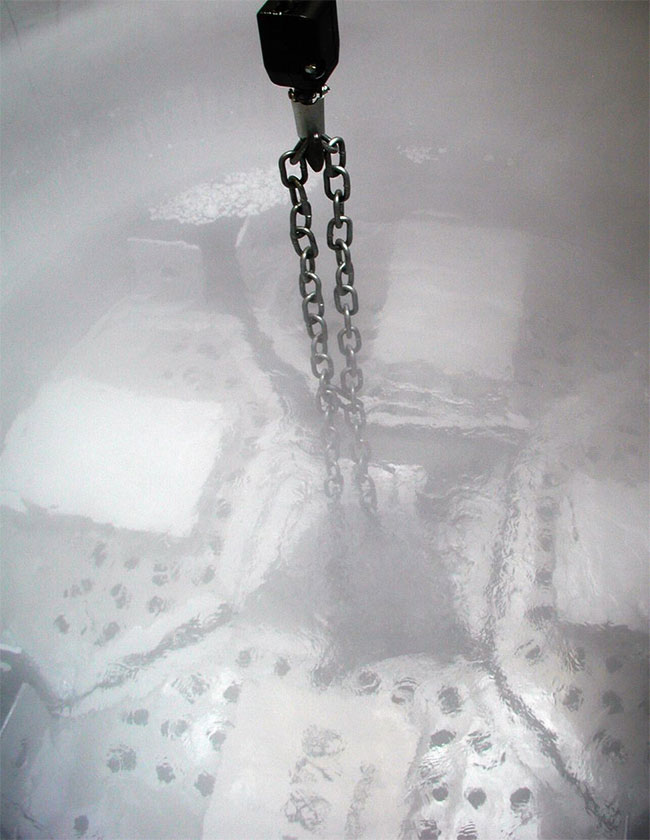
This method helps preserve the human body in perfect condition as if still alive.
Alcor charges $220,000 for those wishing to preserve their entire body and $80,000 for those who only want to preserve their head.
Once the body temperature is lowered to minus 169 degrees Celsius by submersion in liquid nitrogen, they are transferred to the long-term care room.
In this room, each metal compartment filled with liquid nitrogen will hold 9 human bodies. In total, Alcor is preserving the bodies of over 170 individuals.
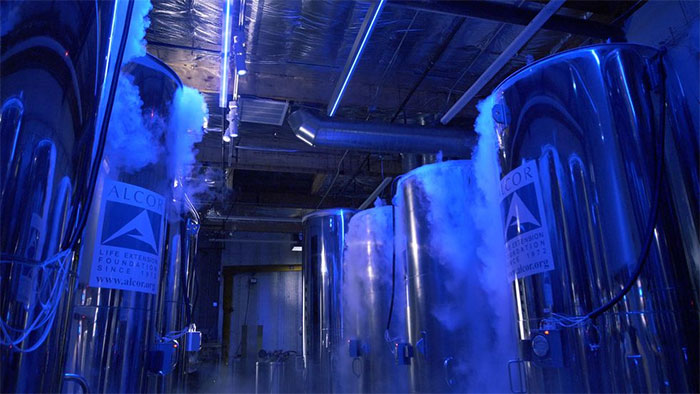
The cost to freeze an entire human body, awaiting revival, is $220,000.
The preserved bodies are stored upside down. This inverted position is for safety reasons. In the event of a liquid nitrogen leak, the head—the most crucial part—will be the last affected.
Alcor replenishes the liquid nitrogen in the metal compartments every few weeks and monitors the temperature status with computers.
Today, the technique for freezing human bodies is quite refined. However, how to bring someone back to life remains a dream.
Humans today still do not fully understand the brain, let alone the technology needed to revive someone.
But Alcor remains optimistic. “We predict that in 50 to 100 years, we will achieve advancements in medical technology to revive frozen individuals with full health and function as normal,” Linda said.
Supporters of cryonics argue that death is a process, not just a simple moment when the heart stops beating. However, this industry has long been criticized as “pseudoscience” or even fraud.
One of the bodies preserved by Alcor is that of a girl named Matheryn Naovaratpong, also known as Einz, who passed away from brain cancer in 2015, just before her third birthday. Einz’s parents, Nareerat and Sahatorn from Thailand, decided to preserve their daughter’s brain. Einz underwent 10 surgeries, 12 rounds of chemotherapy, and 20 rounds of radiation therapy but could not overcome her cancer. Realizing there was no hope left to save their daughter, Sahatorn began researching cryonics in hopes of convincing his wife that their daughter could have a new life in the future.
“This is a way to keep her with us; we have to keep her with us,” Sahatorn expressed.
Initially, the entire family rejected the idea, but Sahatorn spent months persuading them.
“How can we stop death? Yes. Can you believe we will stop it? That’s what I had to convince my family. I convinced my wife for months, and eventually, she agreed.”
The couple began recording videos for their daughter with the hope that she could see them in the future. Meanwhile, Alcor’s team flew to Thailand when Einz passed away. To ensure the cryonics process was as successful as possible, experts recommended starting the freezing process within 60 seconds of the heart beginning to stop.
“I told her to come back and be mom’s daughter again. I love you so much,” Nareerat said before her daughter’s body was frozen and transferred to Arizona.


















































